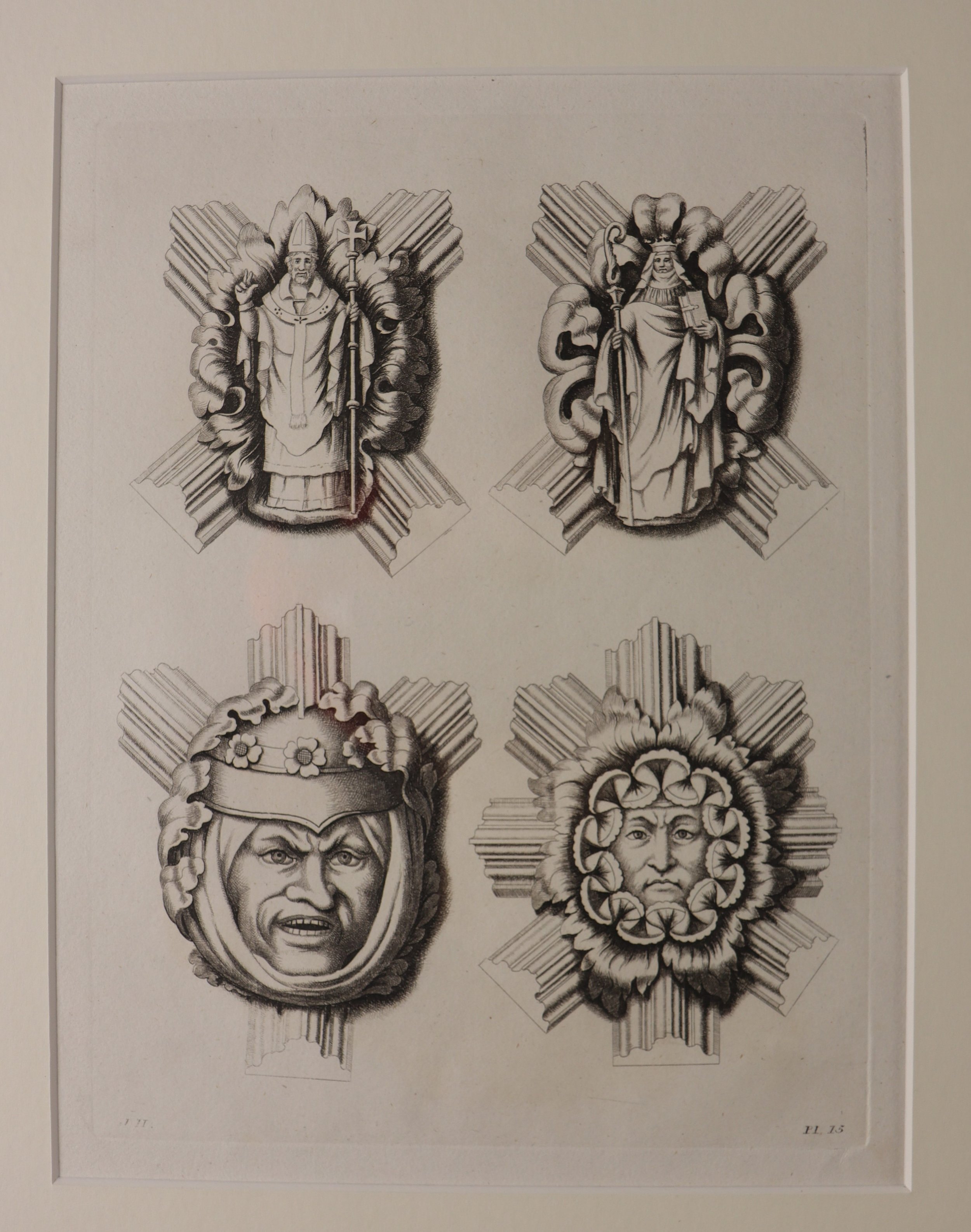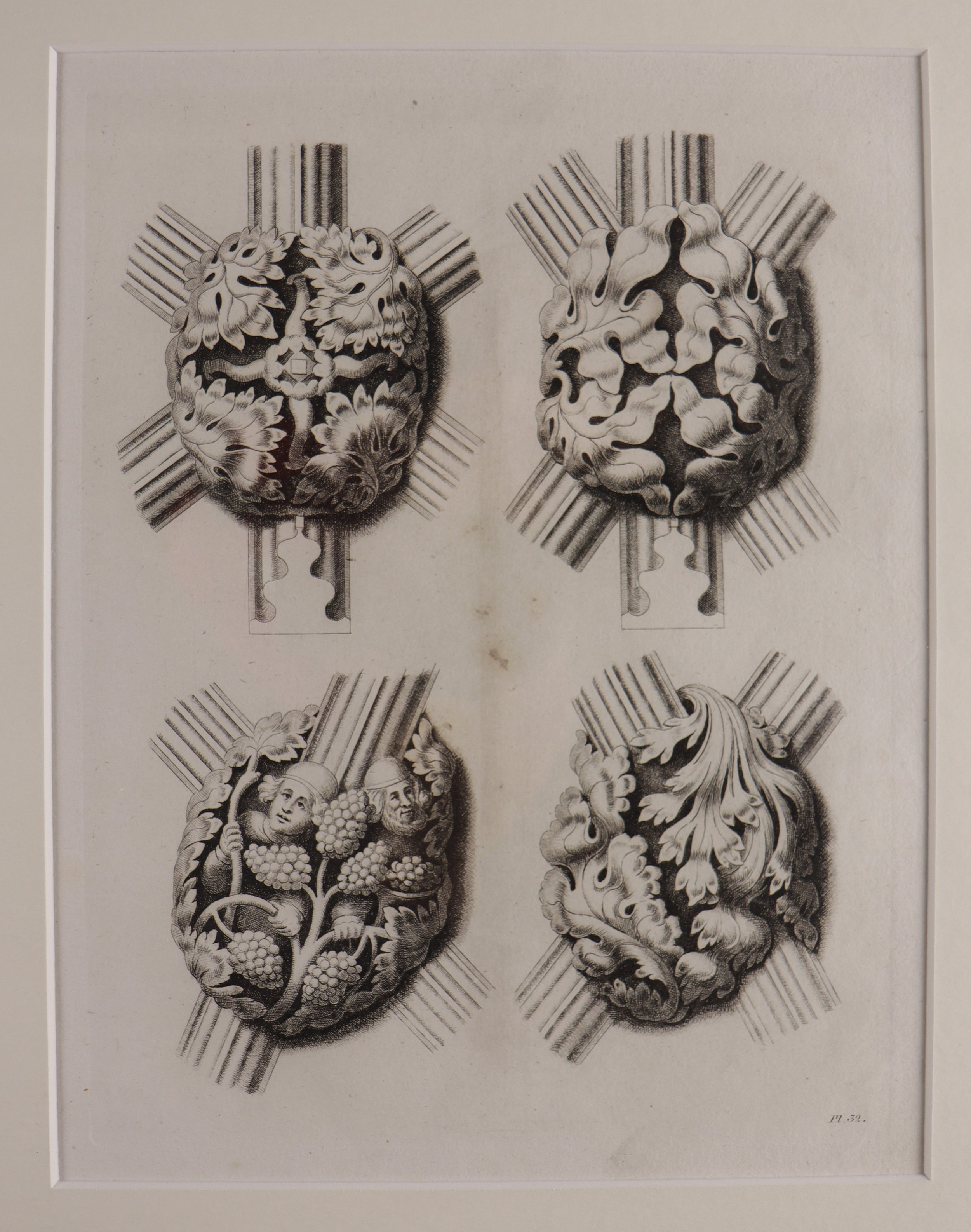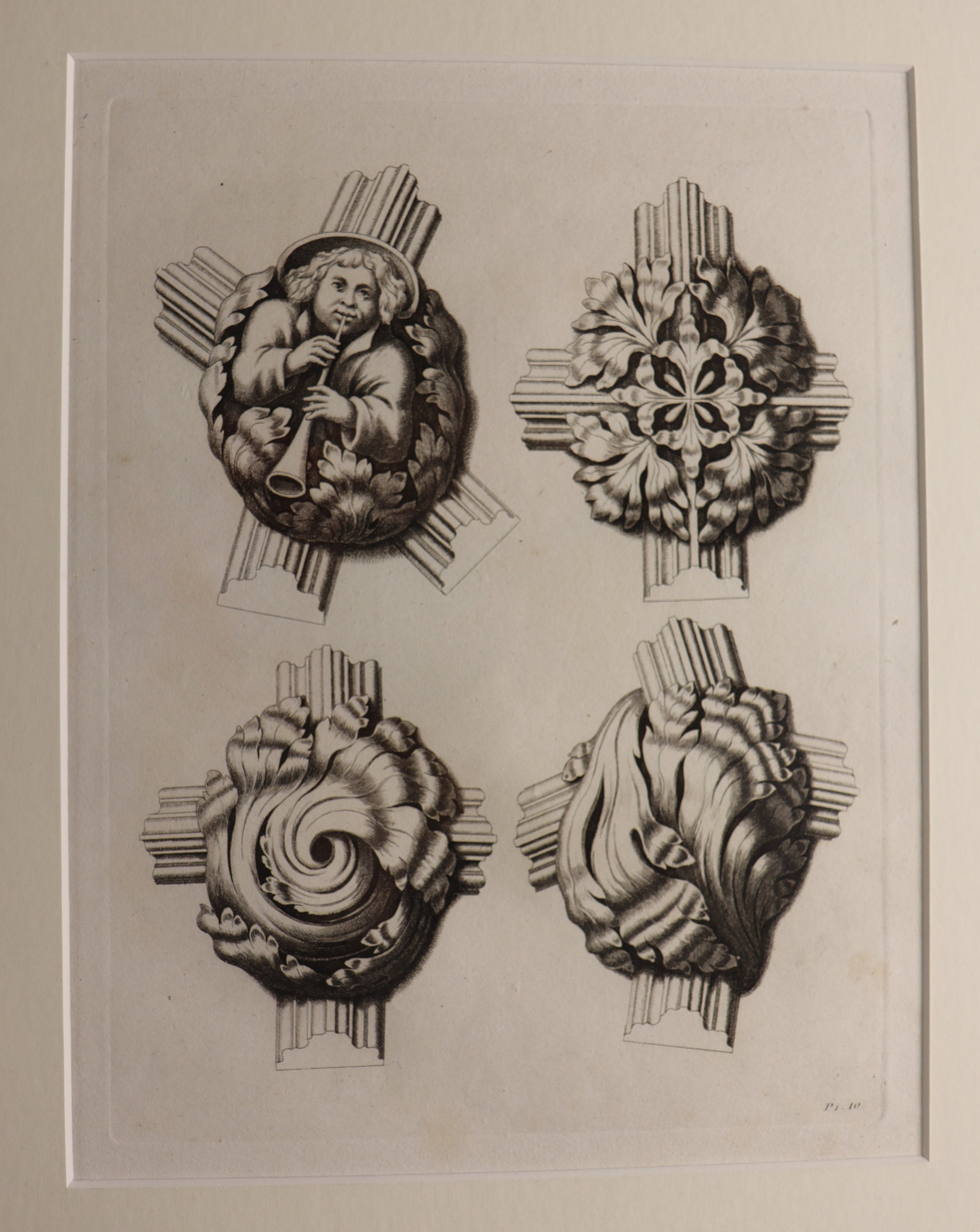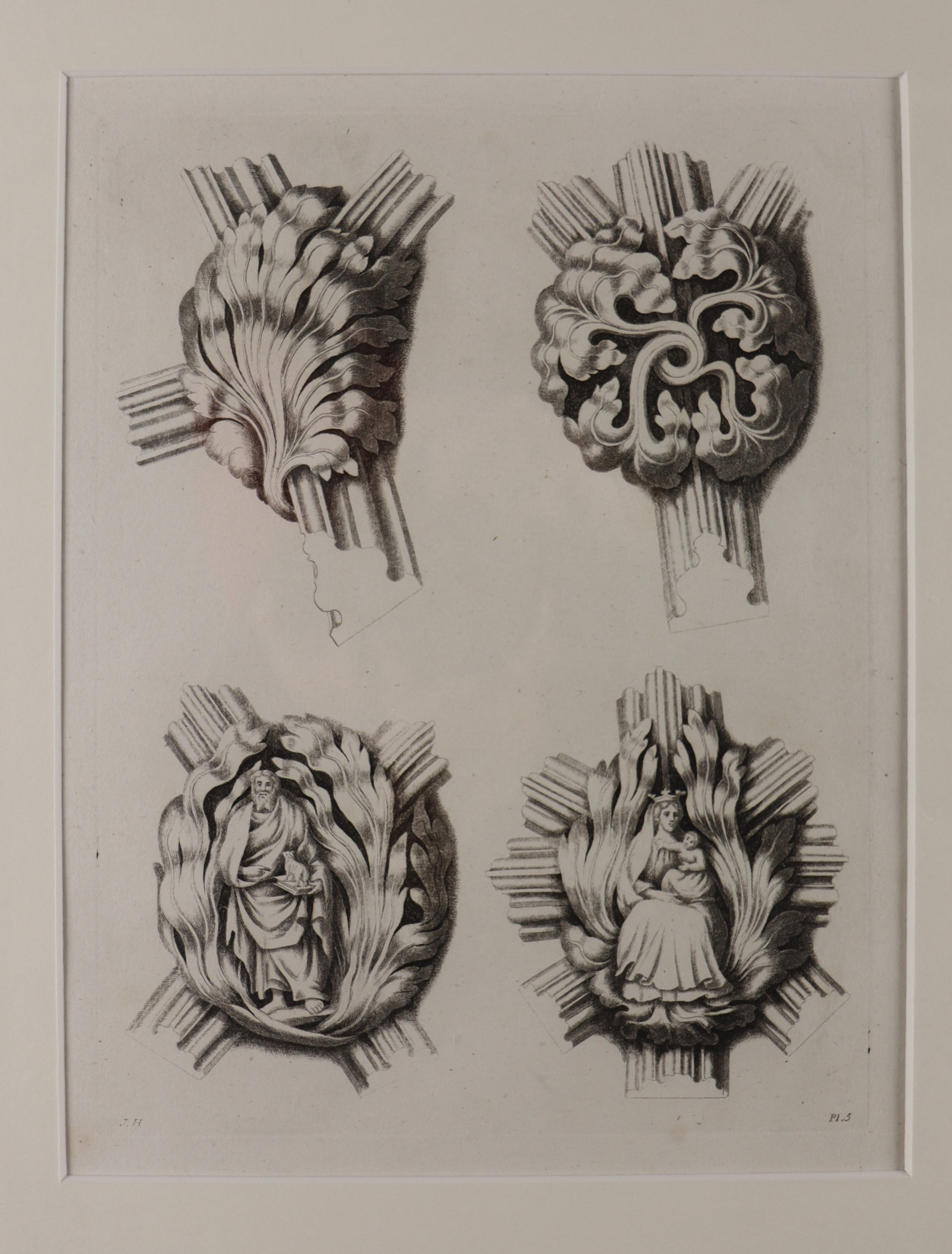York Minster corbels
Gothic Ornaments in the Cathedral of York, Joseph Halfpenny published 1795
Joseph Halfpenny (b. 1748 - d. 1811) was an English draughtsman and architect who is best known for his work on the architectural antiquities of Yorkshire. He was based in York and produced drawings of many historic buildings and architectural features in the region, including York Cathedral, or York Minster, as it is better known.
One of Halfpenny's most notable works is "Fragmenta Vetusta or the Remains of Ancient Buildings in York" published in 1807. This work contains a series of finely executed engravings illustrating the medieval architectural heritage of York. The illustrations here are from a first edition his earlier work, published in 1795, “Gothic Ornaments in the Cathedral of York”.
Halfpenny's work is of particular importance because he captured detailed views of buildings and architectural details that were deteriorating or under threat of demolition in his time. As such, his engravings provide invaluable records for historians, architects, and anyone interested in the architectural heritage of the region. Particularly that of York Minster before the arson attack and subsequent fire of 1829.
In addition to his drawings and engravings, Joseph Halfpenny was also involved in the architectural design and restoration of buildings, contributing to the Gothic Revival movement that was emerging during his lifetime.
This set features 16 engravings of gothic corbels from York Minster and are of exceptional detail 0and are from the choir end (PL 5, 10 & 15) and the nave (PL 32) of the church. In this original publication, Halfpenny set out to describe and depict the ornaments and architectural motifs of York Cathedral comprehensively and precisely. He was at an advantage that many others did not have, not only was he a skilled draughtsman and engraver, but he was also a clerk to an architect who was employed by the cathedral to undertake repair and maintenance work. This gave Halfpenny unrivalled access to closely study the features of the Cathedral and along with his draughting skills, he was able to catalogue them accurately.
These engravings are now approaching 230 years old and are ready to start conversations and create intrigue wherever they are displayed next.




